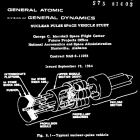 A report prepared by the Future Projects Office of NASA’s Marshall Spaceflight Center and General Atomic, the nuclear power division of General Dynamics, outlines in great detail ways that existing rocket technology (namely the Saturn V, which will not fly until 1967) and theoretical nuclear pulse propulsion technology could be combined to facilitate exploration of the moon and Mars. (Though derived from the Project Orion studies of the late 1950s, the potential nuclear-powered NASA program suggested in this document is not referred to as Orion.) The report, over 174 pages, goes into great detail about crew module design, radiation exposure, ways to mitigate the inevitable ablation of the “pusher plate” at the rear of the vehicle that will absorb a series of nuclear explosions at close range and translate the energy released into forward thrust, and even possible catastrophic launch abort modes, many of which would qualify as at least a small nuclear disaster. Even the health effects on civilian onlookers of a successful launch are considered, from retinal damage caused by viewing high-altitude firings of the nuclear propellant explosions to fallout risks, as well as potential collateral damage to satellites and non-hardened computers resulting from repeated electromagnetic pulses. The mission profiles considered are constrained to lunar missions and missions to Mars. (It’s worth noting that, by the time of this report’s issuance, the Nuclear Test Ban Treaty has been ratified by both the U.S. and the U.S.S.R., making it illegal to put nuclear pulse propulsion into practice.)
A report prepared by the Future Projects Office of NASA’s Marshall Spaceflight Center and General Atomic, the nuclear power division of General Dynamics, outlines in great detail ways that existing rocket technology (namely the Saturn V, which will not fly until 1967) and theoretical nuclear pulse propulsion technology could be combined to facilitate exploration of the moon and Mars. (Though derived from the Project Orion studies of the late 1950s, the potential nuclear-powered NASA program suggested in this document is not referred to as Orion.) The report, over 174 pages, goes into great detail about crew module design, radiation exposure, ways to mitigate the inevitable ablation of the “pusher plate” at the rear of the vehicle that will absorb a series of nuclear explosions at close range and translate the energy released into forward thrust, and even possible catastrophic launch abort modes, many of which would qualify as at least a small nuclear disaster. Even the health effects on civilian onlookers of a successful launch are considered, from retinal damage caused by viewing high-altitude firings of the nuclear propellant explosions to fallout risks, as well as potential collateral damage to satellites and non-hardened computers resulting from repeated electromagnetic pulses. The mission profiles considered are constrained to lunar missions and missions to Mars. (It’s worth noting that, by the time of this report’s issuance, the Nuclear Test Ban Treaty has been ratified by both the U.S. and the U.S.S.R., making it illegal to put nuclear pulse propulsion into practice.)
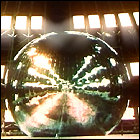 The experimental communications relay satellite Echo 1 is launched into orbit by NASA. A 100-foot metalized Mylar balloon, Echo 1 is a demonstration of passive signal relay, carrying no powered transmitters of its own; its reflective surface simply bounces signals back to Earth. Microwave signals, radio, telephone and TV signals are all successfully relayed via Echo 1; it remains in orbit for four months.
The experimental communications relay satellite Echo 1 is launched into orbit by NASA. A 100-foot metalized Mylar balloon, Echo 1 is a demonstration of passive signal relay, carrying no powered transmitters of its own; its reflective surface simply bounces signals back to Earth. Microwave signals, radio, telephone and TV signals are all successfully relayed via Echo 1; it remains in orbit for four months.
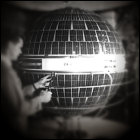 The U.S. Air Force launches the first active-relay communications satellite into orbit, Courier 1B (the original Courier 1 having been lost to a faulty launch vehicle earlier). Unlike the reflective Echo 1 satellite, Courier 1B uses power from the solar cells covering its spherical casing to reboost and retransmit the signals it receives from Earth. Once again, a message from President Eisenhower is transmitted, this time to be received by the United Nations. Clourier 1B remains functional for just over two weeks before a glitch renders it useless.
The U.S. Air Force launches the first active-relay communications satellite into orbit, Courier 1B (the original Courier 1 having been lost to a faulty launch vehicle earlier). Unlike the reflective Echo 1 satellite, Courier 1B uses power from the solar cells covering its spherical casing to reboost and retransmit the signals it receives from Earth. Once again, a message from President Eisenhower is transmitted, this time to be received by the United Nations. Clourier 1B remains functional for just over two weeks before a glitch renders it useless.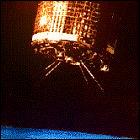 NASA and the United States Weather Bureau launch the second experimental TIROS weather satellite, TIROS-2. Though almost identical to its short-lived predecessor, TIROS-2 is outfitted with a new stabilization system which uses detection of Earth’s magnetic field to properly orient the satellite. TIROS-2 functions successfully for just over one year.
NASA and the United States Weather Bureau launch the second experimental TIROS weather satellite, TIROS-2. Though almost identical to its short-lived predecessor, TIROS-2 is outfitted with a new stabilization system which uses detection of Earth’s magnetic field to properly orient the satellite. TIROS-2 functions successfully for just over one year.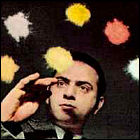 In the journal Science, Carl Sagan proposes an audacious scheme to alter the chemistry of the atmosphere of Venus, making it habitable for humans. His plan involves depositing algae colonies into the planet’s clouds to begin converting the planet’s carbon dioxide into breathable oxygen, and the idea is years ahead of its time (and will later prove to be impractical when more direct studies are made of the Venusian atmosphere).
In the journal Science, Carl Sagan proposes an audacious scheme to alter the chemistry of the atmosphere of Venus, making it habitable for humans. His plan involves depositing algae colonies into the planet’s clouds to begin converting the planet’s carbon dioxide into breathable oxygen, and the idea is years ahead of its time (and will later prove to be impractical when more direct studies are made of the Venusian atmosphere). At a special joint session of Congress called to discuss “urgent national needs,” President John F. Kennedy sets a new goal for NASA (which has only just put a single American astronaut into space): “I believe that this nation should commit itself to achieving the goal, before this decade is out, of landing a man on the moon and returning him safely to the earth. No single space project in this period will be more impressive to mankind, or more important for the long-range exploration of space, and none will be so difficult or expensive to accomplish.” Kennedy requests that Congress pass space-related budgets totaling half a billion dollars for 1962 alone (encompassing not only the Apollo program, but nuclear rocket development, weather satellite development, and communication satellites).
At a special joint session of Congress called to discuss “urgent national needs,” President John F. Kennedy sets a new goal for NASA (which has only just put a single American astronaut into space): “I believe that this nation should commit itself to achieving the goal, before this decade is out, of landing a man on the moon and returning him safely to the earth. No single space project in this period will be more impressive to mankind, or more important for the long-range exploration of space, and none will be so difficult or expensive to accomplish.” Kennedy requests that Congress pass space-related budgets totaling half a billion dollars for 1962 alone (encompassing not only the Apollo program, but nuclear rocket development, weather satellite development, and communication satellites). 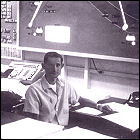 Recent Jet Propulsion Laboratory hire Michael Minovitch submits the first of a series of papers and technical memorandums on the possibility of using carefully-calculated gravitational assist maneuvers to speed transit time between celestial bodies while requiring minimal engine/fuel use. Where most previous scientific thought concentrated on using engine burns (and a lot of fuel) to cancel the effects of a planet’s gravity, Minovitch demonstrated that gravity could be a big help with a carefully calculated trajectory. Though nearly every planetary mission since then has capitalized on Minovitch’s research, it was initially rejected by JPL. Minovitch’s calculations are later revisited by Caltech grad student Gary Flandro, who flags down a particular combination of Minovitch’s pre-computed trajectories for a “grand tour” of the outer solar system, a mission which will eventually be known – in a somewhat scaled-down, less grand form – as Voyager.
Recent Jet Propulsion Laboratory hire Michael Minovitch submits the first of a series of papers and technical memorandums on the possibility of using carefully-calculated gravitational assist maneuvers to speed transit time between celestial bodies while requiring minimal engine/fuel use. Where most previous scientific thought concentrated on using engine burns (and a lot of fuel) to cancel the effects of a planet’s gravity, Minovitch demonstrated that gravity could be a big help with a carefully calculated trajectory. Though nearly every planetary mission since then has capitalized on Minovitch’s research, it was initially rejected by JPL. Minovitch’s calculations are later revisited by Caltech grad student Gary Flandro, who flags down a particular combination of Minovitch’s pre-computed trajectories for a “grand tour” of the outer solar system, a mission which will eventually be known – in a somewhat scaled-down, less grand form – as Voyager.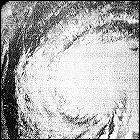 NASA and the United States Weather Bureau launch the third experimental TIROS weather satellite, TIROS-3. Further refinements to the basic TIROS satellite system are made, but one of the satellite’s two television cameras fails within days of going into service. TIROS-3 proves the future life-saving potential of weather satellites by giving Earthbound meteorologists advance warning of the formation and strengthening of Hurricane Esther well before it makes landfall on the east coast of the United States. TIROS-3 is operational for less than a year.
NASA and the United States Weather Bureau launch the third experimental TIROS weather satellite, TIROS-3. Further refinements to the basic TIROS satellite system are made, but one of the satellite’s two television cameras fails within days of going into service. TIROS-3 proves the future life-saving potential of weather satellites by giving Earthbound meteorologists advance warning of the formation and strengthening of Hurricane Esther well before it makes landfall on the east coast of the United States. TIROS-3 is operational for less than a year. The Soviet Union detonates the most powerful thermonuclear weapon built to date, code-named AN602, or, more informally, “Tsar Bomba”. Though it’s designed to deliver a yield of 100 megatons, the 27-ton device is only fueled enough to produce a 50-megaton explosion, still enough to be detected by other nations. (A U.S. reconnaissance aircraft is close enough to witness the detonation, so the test is hardly a secret to the western world.) The detonation registers on seismic sensors, and interferes with radio transmissions nearby for nearly an hour; the explosion is visible as far away as Norway and Alaska. Due to modifications made to avoid endangering the Soviet population, fallout is minimal, though that might not be the case were the weapon to be deployed offensively.
The Soviet Union detonates the most powerful thermonuclear weapon built to date, code-named AN602, or, more informally, “Tsar Bomba”. Though it’s designed to deliver a yield of 100 megatons, the 27-ton device is only fueled enough to produce a 50-megaton explosion, still enough to be detected by other nations. (A U.S. reconnaissance aircraft is close enough to witness the detonation, so the test is hardly a secret to the western world.) The detonation registers on seismic sensors, and interferes with radio transmissions nearby for nearly an hour; the explosion is visible as far away as Norway and Alaska. Due to modifications made to avoid endangering the Soviet population, fallout is minimal, though that might not be the case were the weapon to be deployed offensively.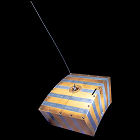 OSCAR-1, an experimental satellite designed and built by amateur radio engineers for a technology test, is launched as a secondary payload aboard an Air Force rocket whose primary payload is a reconnaissance satellite. This is the first launch in history with a secondary payload, and the first payload not developed by a specific government or its agencies. The amateur radio engineers of Project OSCAR built the simple transmitter satellite for a grand total of $35, with a finite battery life and no attitude control thrusters of any kind, to transmit the message “HI” in the 2-meter band until the battery expired (which happens a few weeks before the satellite re-enters Earth’s atmosphere in late January 1962). A nearly-identical OSCAR-2 satellite will be launched in June 1962, while OSCAR-3, launched in 1965, is capable of receiving and retransmitting signals.
OSCAR-1, an experimental satellite designed and built by amateur radio engineers for a technology test, is launched as a secondary payload aboard an Air Force rocket whose primary payload is a reconnaissance satellite. This is the first launch in history with a secondary payload, and the first payload not developed by a specific government or its agencies. The amateur radio engineers of Project OSCAR built the simple transmitter satellite for a grand total of $35, with a finite battery life and no attitude control thrusters of any kind, to transmit the message “HI” in the 2-meter band until the battery expired (which happens a few weeks before the satellite re-enters Earth’s atmosphere in late January 1962). A nearly-identical OSCAR-2 satellite will be launched in June 1962, while OSCAR-3, launched in 1965, is capable of receiving and retransmitting signals. The United States launches the Starfish Prime high-altitude nuclear weapons test, detonating a 1.4 megaton warhead at an altitude of 250 miles, the largest space-based nuclear test to date. The flash of the detonation creates a brief “false sunrise” over much of the Pacific Ocean, as well as an unusual auroral display resulting from the sudden release of charged particles trapped within Earth’s magnetic field. An electromagnetic pulse is also observed, more powerful than expected, causing some damage to the Hawaiian power grid. The radiation released in low Earth orbit also interferes with some satellites, including shortening their operational life spans (this includes the
The United States launches the Starfish Prime high-altitude nuclear weapons test, detonating a 1.4 megaton warhead at an altitude of 250 miles, the largest space-based nuclear test to date. The flash of the detonation creates a brief “false sunrise” over much of the Pacific Ocean, as well as an unusual auroral display resulting from the sudden release of charged particles trapped within Earth’s magnetic field. An electromagnetic pulse is also observed, more powerful than expected, causing some damage to the Hawaiian power grid. The radiation released in low Earth orbit also interferes with some satellites, including shortening their operational life spans (this includes the 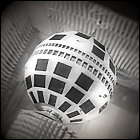 The first Telstar communications satellite is launched, the first attempt to forge a permanent trans-Atlantic telecommunications link with an satellite that both receives and actively retransmits signals. A multinational venture between communications companies and government agencies in America, England and France, Telstar relays the first live trans-Atlantic television broadcast, bringing together the three major American networks of the time and the BBC for a one-of-a-kind joint news broadcast. Live intercontinental telephone calls and other TV broadcasts are also handled by Telstar. Though it’s an experimental satellite, Tesltar is expected to remain in service for some time, but its operational life is reduced to less than a year by, among other things, the effects of high-altitude nuclear weapons tests. Telstar shuts down in February 1963, but remains in orbit to this day.
The first Telstar communications satellite is launched, the first attempt to forge a permanent trans-Atlantic telecommunications link with an satellite that both receives and actively retransmits signals. A multinational venture between communications companies and government agencies in America, England and France, Telstar relays the first live trans-Atlantic television broadcast, bringing together the three major American networks of the time and the BBC for a one-of-a-kind joint news broadcast. Live intercontinental telephone calls and other TV broadcasts are also handled by Telstar. Though it’s an experimental satellite, Tesltar is expected to remain in service for some time, but its operational life is reduced to less than a year by, among other things, the effects of high-altitude nuclear weapons tests. Telstar shuts down in February 1963, but remains in orbit to this day.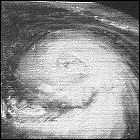 NASA and the United States Weather Bureau launch the sixth experimental TIROS weather satellite, TIROS-6. Launched specifically to allow for better detection of storms during the 1962 Atlantic hurricane season, TIROS-6 has a full workload within days of launch as Hurricane Daisy forms in the Caribbean Sea and makes its way to New England. TIROS-6 finally provides a successful test for NASA’s attempts to keep a weather satellite in service for long-duration missions, lasting over a year in orbit.
NASA and the United States Weather Bureau launch the sixth experimental TIROS weather satellite, TIROS-6. Launched specifically to allow for better detection of storms during the 1962 Atlantic hurricane season, TIROS-6 has a full workload within days of launch as Hurricane Daisy forms in the Caribbean Sea and makes its way to New England. TIROS-6 finally provides a successful test for NASA’s attempts to keep a weather satellite in service for long-duration missions, lasting over a year in orbit.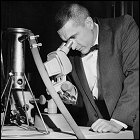 Working at General Electric’s New York R&D lab, scientist Nick Holonyak fires up the first working visible-spectrum light-emitting diode, producing a single small red light. (Texas Instruments had already created infrared LEDs the year before.) Too expensive to mass-produce initially, LEDs will become commonplace in calculators and other electronic devices in the 1970s, though more modern variants in the 1990s will lead to a revolution in lighting and display technology, resulting in flat-screen computer monitors and televisions and spinoff technology such as tablet computers and portable telephones with LED-based touchscreens – all unimaginable in
Working at General Electric’s New York R&D lab, scientist Nick Holonyak fires up the first working visible-spectrum light-emitting diode, producing a single small red light. (Texas Instruments had already created infrared LEDs the year before.) Too expensive to mass-produce initially, LEDs will become commonplace in calculators and other electronic devices in the 1970s, though more modern variants in the 1990s will lead to a revolution in lighting and display technology, resulting in flat-screen computer monitors and televisions and spinoff technology such as tablet computers and portable telephones with LED-based touchscreens – all unimaginable in 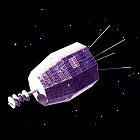 NASA launches the experimental, RCA-built Relay 1 communications satellite. This is the first satellite to relay television signals from the United States to Japan, including the first word of the assassination of President Kennedy in
NASA launches the experimental, RCA-built Relay 1 communications satellite. This is the first satellite to relay television signals from the United States to Japan, including the first word of the assassination of President Kennedy in 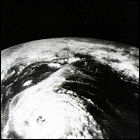 NASA and the United States Weather Bureau launch the seventh experimental TIROS weather satellite, TIROS-7. In addition to observing weather on Earth, TIROS-7 carries instruments to measure electron activity in Earth’s vicinity and to measure the temperature of space. Enhancements designed to extend the satellite’s life prove to be wildly successful: TIROS-7 is the longest-lived of the experimental TIROS series, remaining in service for five years (and, critically, five hurricane seasons).
NASA and the United States Weather Bureau launch the seventh experimental TIROS weather satellite, TIROS-7. In addition to observing weather on Earth, TIROS-7 carries instruments to measure electron activity in Earth’s vicinity and to measure the temperature of space. Enhancements designed to extend the satellite’s life prove to be wildly successful: TIROS-7 is the longest-lived of the experimental TIROS series, remaining in service for five years (and, critically, five hurricane seasons).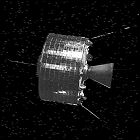 NASA launches the experimental, Hughes Aircraft-built communications satellite Syncom 2 into a geosynchronous orbit, the first human-made satellite to occupy that orbit. (Syncom 1, launched in February, malfunctioned on its way to that orbit, so technically it could be considered the first, though it didn’t arrive in geosynchronous orbit in a functional state.) Capable of handling either a single two-way telephone call, or up to 16 simultaneous teletype transmissions. Early fax transmission tests were also carried out. Syncom 2 could also transmit low-quality video, but with no audio. Control of Syncom 2 is handed over to the Department of Defense in
NASA launches the experimental, Hughes Aircraft-built communications satellite Syncom 2 into a geosynchronous orbit, the first human-made satellite to occupy that orbit. (Syncom 1, launched in February, malfunctioned on its way to that orbit, so technically it could be considered the first, though it didn’t arrive in geosynchronous orbit in a functional state.) Capable of handling either a single two-way telephone call, or up to 16 simultaneous teletype transmissions. Early fax transmission tests were also carried out. Syncom 2 could also transmit low-quality video, but with no audio. Control of Syncom 2 is handed over to the Department of Defense in  The United States Federal Communications Commission places a ten-year hold on television station licenses for UHF channel 37. Channel 37’s bandwidth, in the 608-614 megahertz range, is vital to the burgeoning science of radio astronomy. The FCC immediately sets about reallocating channels on the UHF dial for 18 television stations across America, which had previously been allocated channel 37 on their licenses. One month later, the ban on broadcasting in that part of the spectrum is made global; no television station in the United States, Mexico, Canada, and several other countries will ever occupy those frequencies. When the ban comes up for review again in
The United States Federal Communications Commission places a ten-year hold on television station licenses for UHF channel 37. Channel 37’s bandwidth, in the 608-614 megahertz range, is vital to the burgeoning science of radio astronomy. The FCC immediately sets about reallocating channels on the UHF dial for 18 television stations across America, which had previously been allocated channel 37 on their licenses. One month later, the ban on broadcasting in that part of the spectrum is made global; no television station in the United States, Mexico, Canada, and several other countries will ever occupy those frequencies. When the ban comes up for review again in 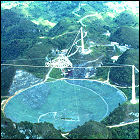 Nestled into a mountainous forest region of Puerto Rico, the Cornell University-funded Arecibo Radio Telescope officially begins operations. With a diameter of a thousand feet, this remains the world’s largest radio telescope until the 21st century. Studies of Earth’s ionosphere are high on the priority list, but radio astronomy isn’t far behind, and important discoveries are made at Arecibo within months of it opening.
Nestled into a mountainous forest region of Puerto Rico, the Cornell University-funded Arecibo Radio Telescope officially begins operations. With a diameter of a thousand feet, this remains the world’s largest radio telescope until the 21st century. Studies of Earth’s ionosphere are high on the priority list, but radio astronomy isn’t far behind, and important discoveries are made at Arecibo within months of it opening. An Icelandic fishing vessel investigates a column of smoke almost 30 miles off of Iceland’s southern coast, with the crew believing it to be another boat in distress. What the crew finds, however, is a new volcanic island poking out of the sea – a submarine eruption that has now broken the surface of the Atlantic. A column of airborne ash and gas rises miles into the air, and within a weak vigorous eruptions create a new island over 1500 feet long, rising 147 feet above sea level. The eruption continues violently, adding more land area to the island but keeping scientists (and sightseers) at bay. The island is named Surtsey after a figure in Norse mythology.
An Icelandic fishing vessel investigates a column of smoke almost 30 miles off of Iceland’s southern coast, with the crew believing it to be another boat in distress. What the crew finds, however, is a new volcanic island poking out of the sea – a submarine eruption that has now broken the surface of the Atlantic. A column of airborne ash and gas rises miles into the air, and within a weak vigorous eruptions create a new island over 1500 feet long, rising 147 feet above sea level. The eruption continues violently, adding more land area to the island but keeping scientists (and sightseers) at bay. The island is named Surtsey after a figure in Norse mythology.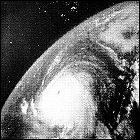 NASA and the United States Weather Bureau launch the eighth experimental TIROS weather satellite, TIROS-8. With TIROS-7 still fully operational, TIROS-8 expands coverage of Earth’s weather (including early detection and tracking of Hurricane Betsy, the first hurricane in American history to cause over $1,000,000,000 in damage) and tests new technology, including a high resolution, slow-scan imaging system. TIROS-8 is the second longest-lived of the early experimental TIROS satellites, remaining in service for three and a half years.
NASA and the United States Weather Bureau launch the eighth experimental TIROS weather satellite, TIROS-8. With TIROS-7 still fully operational, TIROS-8 expands coverage of Earth’s weather (including early detection and tracking of Hurricane Betsy, the first hurricane in American history to cause over $1,000,000,000 in damage) and tests new technology, including a high resolution, slow-scan imaging system. TIROS-8 is the second longest-lived of the early experimental TIROS satellites, remaining in service for three and a half years.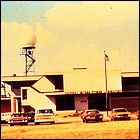 To further research into the formation and evolution of severe weather in the midwestern United States, the U.S. Weather Bureau establishes the National Severe Storms Laboratory in Norman, Oklahoma. Operating in close cooperation with the University of Oklahoma’s meteorology department and the Severe Local Storms Warning Service in Kansas City, the NSSL focuses on improving prediction and detection of destructive weather, including tornadoes, quickly fixating upon the potential of Doppler radar.
To further research into the formation and evolution of severe weather in the midwestern United States, the U.S. Weather Bureau establishes the National Severe Storms Laboratory in Norman, Oklahoma. Operating in close cooperation with the University of Oklahoma’s meteorology department and the Severe Local Storms Warning Service in Kansas City, the NSSL focuses on improving prediction and detection of destructive weather, including tornadoes, quickly fixating upon the potential of Doppler radar. Now nearly five months old, the volcanic island of Surtsey, still erupting and building up from the seafloor off the southern coast of Iceland, transitions to a new phase of its eruption. The explosive eruptions, caused by hot magma coming into direct contact with seawater, subside as the volcanic vents are now permanently above sea level. Almost a mile in diameter, Surtsey’s eruptions transition to lava fountains and lava flows, which harden as they are cooled by the coastal water. This harder material helps to protect Surtsey from being eroded away, and eruptions will continue to add more land area to Surtsey through 1965. Surtsey is almost ready for brief visits from human researchers, who will find life taking root on the island much sooner than expected.
Now nearly five months old, the volcanic island of Surtsey, still erupting and building up from the seafloor off the southern coast of Iceland, transitions to a new phase of its eruption. The explosive eruptions, caused by hot magma coming into direct contact with seawater, subside as the volcanic vents are now permanently above sea level. Almost a mile in diameter, Surtsey’s eruptions transition to lava fountains and lava flows, which harden as they are cooled by the coastal water. This harder material helps to protect Surtsey from being eroded away, and eruptions will continue to add more land area to Surtsey through 1965. Surtsey is almost ready for brief visits from human researchers, who will find life taking root on the island much sooner than expected.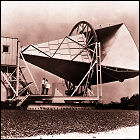 Using a 20-foot, horn-shaped receiver built at Bell Laboratories’ Holmdell, New Jersey facility for tests of the Echo-1 satellite in
Using a 20-foot, horn-shaped receiver built at Bell Laboratories’ Holmdell, New Jersey facility for tests of the Echo-1 satellite in 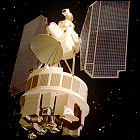 NASA and the United States Weather Bureau launch the first test article of the next-generation weather satellite, Nimbus-1. Using the more advanced camera technology (including infrared filters to watch cloud motion even on Earth’s night side) tested aboard TIROS-8, Nimbus-1 provides a vast improvement on satellite weather observations over the hardware on the TIROS experimental satellites. The first Nimbus satellite remains in service for only a month; later Nimbus satellites continue to be launched into service well into the late 1970s, and most of them remain operational into the 1980s.
NASA and the United States Weather Bureau launch the first test article of the next-generation weather satellite, Nimbus-1. Using the more advanced camera technology (including infrared filters to watch cloud motion even on Earth’s night side) tested aboard TIROS-8, Nimbus-1 provides a vast improvement on satellite weather observations over the hardware on the TIROS experimental satellites. The first Nimbus satellite remains in service for only a month; later Nimbus satellites continue to be launched into service well into the late 1970s, and most of them remain operational into the 1980s. A report prepared by the Future Projects Office of NASA’s Marshall Spaceflight Center and General Atomic, the nuclear power division of General Dynamics, outlines in great detail ways that existing rocket technology (namely the Saturn V, which will not fly until 1967) and theoretical nuclear pulse propulsion technology could be combined to facilitate exploration of the moon and Mars. (Though derived from the Project Orion studies of the late 1950s, the potential nuclear-powered NASA program suggested in this document is not referred to as Orion.) The report, over 174 pages, goes into great detail about crew module design, radiation exposure, ways to mitigate the inevitable ablation of the “pusher plate” at the rear of the vehicle that will absorb a series of nuclear explosions at close range and translate the energy released into forward thrust, and even possible catastrophic launch abort modes, many of which would qualify as at least a small nuclear disaster. Even the health effects on civilian onlookers of a successful launch are considered, from retinal damage caused by viewing high-altitude firings of the nuclear propellant explosions to fallout risks, as well as potential collateral damage to satellites and non-hardened computers resulting from repeated electromagnetic pulses. The mission profiles considered are constrained to lunar missions and missions to Mars. (It’s worth noting that, by the time of this report’s issuance, the Nuclear Test Ban Treaty has been ratified by both the U.S. and the U.S.S.R., making it illegal to put nuclear pulse propulsion into practice.)
A report prepared by the Future Projects Office of NASA’s Marshall Spaceflight Center and General Atomic, the nuclear power division of General Dynamics, outlines in great detail ways that existing rocket technology (namely the Saturn V, which will not fly until 1967) and theoretical nuclear pulse propulsion technology could be combined to facilitate exploration of the moon and Mars. (Though derived from the Project Orion studies of the late 1950s, the potential nuclear-powered NASA program suggested in this document is not referred to as Orion.) The report, over 174 pages, goes into great detail about crew module design, radiation exposure, ways to mitigate the inevitable ablation of the “pusher plate” at the rear of the vehicle that will absorb a series of nuclear explosions at close range and translate the energy released into forward thrust, and even possible catastrophic launch abort modes, many of which would qualify as at least a small nuclear disaster. Even the health effects on civilian onlookers of a successful launch are considered, from retinal damage caused by viewing high-altitude firings of the nuclear propellant explosions to fallout risks, as well as potential collateral damage to satellites and non-hardened computers resulting from repeated electromagnetic pulses. The mission profiles considered are constrained to lunar missions and missions to Mars. (It’s worth noting that, by the time of this report’s issuance, the Nuclear Test Ban Treaty has been ratified by both the U.S. and the U.S.S.R., making it illegal to put nuclear pulse propulsion into practice.)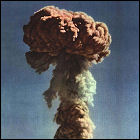 The People’s Republic of China detonates its first nuclear weapon, the 22-kiloton Project 596. Though the Chinese nuclear program did receive an early boost from Soviet researchers, much of the research and production of Chinese nuclear weapons has taken place without outside help since the initiation of the Chinese nuclear weapons development program in 1959. Within three years of this test, China will have developed hydrogen bomb technology.
The People’s Republic of China detonates its first nuclear weapon, the 22-kiloton Project 596. Though the Chinese nuclear program did receive an early boost from Soviet researchers, much of the research and production of Chinese nuclear weapons has taken place without outside help since the initiation of the Chinese nuclear weapons development program in 1959. Within three years of this test, China will have developed hydrogen bomb technology.